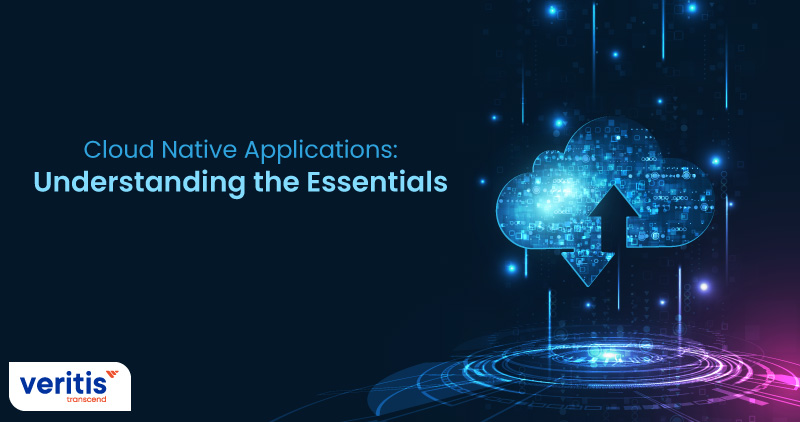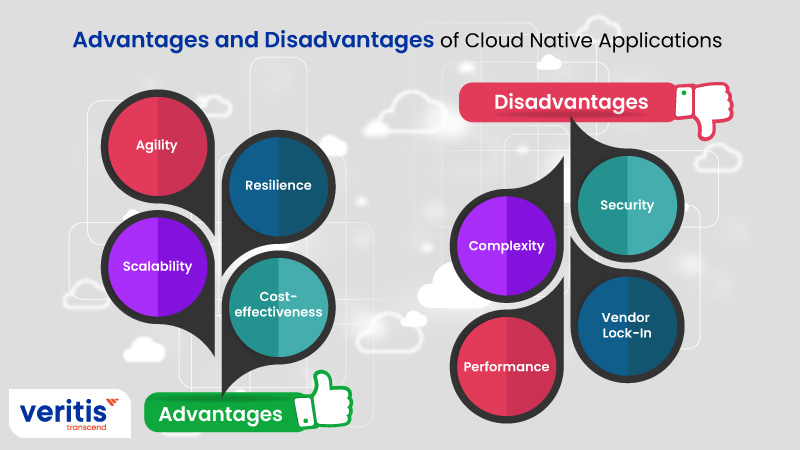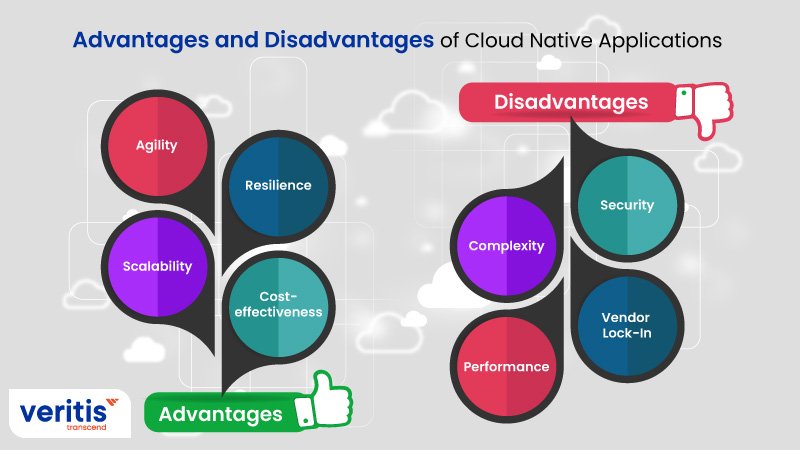
Understanding Cloud-Native Applications
Definition of Cloud-Native Applications
Cloud-native applications are designed specifically to leverage the advantages of cloud computing. These applications are built and deployed in a way that allows them to take full advantage of cloud environments, enhancing scalability, resilience, and flexibility. Instead of traditional methodologies that rely heavily on specific hardware and infrastructure, cloud-native applications are typically hosted in the cloud and can adapt dynamically to the fluctuating demands of users.
The term “cloud-native” underscores the importance of developing applications that are not merely hosted in the cloud, but rather engineered for cloud environments from the onset. This involves techniques like microservices, containers, and continuous delivery, providing teams the ability to deliver updates quickly and efficiently.
Characteristics of Cloud-Native Applications
Cloud-native applications possess several key characteristics that set them apart from traditional applications:
- Microservices Architecture: They are built as a collection of loosely coupled services that can be developed, deployed, and scaled independently.
- Resilience: These applications are designed to withstand failures and continue operating smoothly without downtime.
- Dynamic Scalability: They can automatically adjust resources based on demand, ensuring optimal performance.
- Automated Management: Cloud-native applications leverage automation tools for deployment and management, reducing human intervention.
Much like our experience at TECHFACK, where we transitioned to cloud-native models, these applications empower businesses to innovate rapidly while managing costs effectively. This shift not only streamlined our processes but also enhanced our responsiveness to market changes.

Benefits of Cloud-Native Applications
Scalability and Flexibility
One of the standout benefits of cloud-native applications is their unparalleled scalability and flexibility. These applications can expand or contract in response to real-time demands. For example, during peak traffic periods—like holiday sales—cloud-native systems can quickly allocate additional resources to ensure smooth operations. Personally, at TECHFACK, we noticed a dramatic improvement in user experiences during surge periods. It’s a relief not to worry about server crashes!
- Auto-scaling: Cloud providers automatically scale resources based on application traffic.
- Global Reach: Services can be deployed in multiple regions, ensuring low latency for users worldwide.
Cost-Efficiency
Cost-efficiency is another compelling advantage. With cloud-native applications, organizations pay for the resources they actually use rather than maintaining an expensive infrastructure. By leveraging this model, TECHFACK reduced our operational costs significantly. We only scale up when necessary, which resulted in savings that we could reinvest in innovation.
- Resource Optimization: Dynamic allocation helps avoid over-provisioning.
- Reduced Maintenance Costs: Companies spend less on hardware and maintenance since most infrastructure management is handled by cloud providers.
Faster Time-to-Market
Lastly, cloud-native applications support a faster time-to-market. The ability to deploy microservices independently means new features can be rolled out rapidly without impacting the entire application. At TECHFACK, we’ve been able to push updates to our users more frequently, keeping us agile and responsive to feedback.
- Continuous Integration/Continuous Deployment (CI/CD): Automating testing and deployment allows teams to release updates seamlessly.
- Rapid Development Cycles: Teams can experiment and iterate more quickly, promoting innovation.
In short, embracing cloud-native applications presents an array of benefits—from scalability to rapid deployment—that empower organizations to thrive in today’s dynamic digital landscape.

Challenges in Implementing Cloud-Native Applications
While the benefits of cloud-native applications are enticing, organizations must also navigate several challenges during implementation. Understanding these hurdles is crucial for a successful transition.
Security Concerns
One of the primary challenges remains security. With data residing in the cloud, organizations face heightened risks of breaches and vulnerabilities. At TECHFACK, we once faced a potential security threat due to misconfigured cloud settings. This experience prompted us to prioritize robust security measures from the get-go.
- Data Privacy: Ensuring compliance with regulations such as GDPR or CCPA is essential.
- Identity Management: Implementing strict access controls helps minimize risks.
Integration Complexity
Another significant challenge lies in integration complexity. Merging existing legacy systems with cloud-native applications can be daunting. At TECHFACK, integrating our older systems required meticulous planning and coordination among teams.
- APIs and Microservices: Developing robust APIs is crucial for seamless communication.
- Diverse Technologies: Managing various technologies can lead to compatibility issues.
Cultural Shifts
Finally, the shift to cloud-native applications often requires a cultural transformation within organizations. Employees must adopt agile methodologies and embrace new tools, which can lead to resistance. At TECHFACK, we invested in comprehensive training programs to equip our team with the necessary skills for this transition.
- Promoting Agility: Encouraging iterative development and collaboration enhances buy-in.
- Change Management: Addressing employees’ concerns and fostering a growth mindset are vital for successful implementation.
By acknowledging and overcoming these challenges, organizations can more effectively leverage the potential of cloud-native applications, paving the way for innovation and growth.

Best Practices for Developing Cloud-Native Applications
Having navigated the challenges of implementing cloud-native applications, it’s essential to focus on best practices that can lead to success. These methodologies can streamline development processes and enhance application performance.
Microservices Architecture
Adopting a microservices architecture is a cornerstone of cloud-native development. This approach involves breaking down applications into smaller, independent services that can be developed, deployed, and scaled individually. At TECHFACK, implementing microservices allowed our teams to work concurrently on different features, significantly speeding up our development cycles.
- Isolation of Services: Issues in one microservice do not affect the entire application, ensuring better resilience.
- Technology Diversity: Teams can use different technologies that best fit each microservice’s needs.
Continuous Integration/Continuous Deployment (CI/CD)
The CI/CD pipeline accelerates software delivery and improves quality by automating testing and deployment. By integrating code changes regularly, teams can catch issues early. At TECHFACK, this practice has enabled us to maintain a steady flow of updates and rapidly address user feedback.
- Automated Testing: Ensures that new code integrates smoothly without breaking existing functionality.
- Faster Releases: Regular deployments keep the application fresh and responsive to market demands.
Containerization
Containerization is another best practice that enhances the portability and management of applications. Utilizing technologies like Docker allows developers to package microservices along with their dependencies into containers that can be deployed reliably across various environments. This was a game changer for TECHFACK, simplifying our deployment processes.
- Consistent Environments: Containers ensure that an application runs the same way across development, testing, and production.
- Resource Efficiency: Containers use system resources more efficiently compared to traditional virtual machines.
By embracing these best practices—microservices architecture, CI/CD, and containerization—organizations can ensure that their cloud-native applications are robust, scalable, and ready to meet the demands of today’s fast-paced tech landscape.

Case Studies: Successful Implementations of Cloud-Native Applications
To truly understand the impact of cloud-native applications, let’s take a closer look at how organizations have successfully implemented these practices and the results they achieved.
Company A: Achieving Significant Scalability
Company A, a leading e-commerce platform, faced challenges managing fluctuating traffic demands during peak shopping seasons. By transitioning to a cloud-native architecture, they adopted a microservices approach that allowed various teams to develop and scale different functionalities independently.
The results were impressive:
- Traffic Management: During their last holiday sales, they increased user traffic by 150% without experiencing downtime.
- Cost Savings: The company reduced cloud spending by 30% through efficient resource allocation.
At TECHFACK, we admire how Company A scaled rapidly while adapting to customer needs seamlessly.
Company B: Overcoming Integration Complexity
On the other hand, Company B, a large financial services provider, struggled with integrating various legacy systems into their new cloud-native setup. By investing heavily in robust APIs and leveraging containerization, they successfully created a cohesive environment for both old and new systems.
Key outcomes included:
- Enhanced System Communication: Integration improved customer service response times by 40%.
- Increased Agility: Teams could implement changes more quickly and reliably.
This journey reminded us of our own experience at TECHFACK, showcasing that while challenges exist, the right approach can lead to remarkable transformations.
These case studies illustrate how cloud-native applications can revolutionize organizations, making them more resilient, agile, and better positioned for future growth.

Future Trends in Cloud-Native Applications
As technology continues to evolve, so do the possibilities for cloud-native applications. Knowing the emerging trends can help organizations stay ahead of the curve and leverage new opportunities.
Serverless Computing
One of the most exciting trends is serverless computing. This innovative approach allows developers to focus solely on writing code without the hassle of managing servers. Companies can automatically scale resources based on demand, paying only for what they use. At TECHFACK, we recently experimented with serverless functions for our data processing needs, resulting in significant time savings and cost efficiency.
Benefits of serverless computing include:
- Reduced Operational Overhead: Developers can concentrate on building features and functionality rather than managing infrastructure.
- Scalability: Applications can instantaneously scale to handle variable workloads, ensuring optimal performance during peak times.
Edge Computing
Another critical trend is edge computing, which involves processing data closer to its source rather than relying on a centralized data center. This is particularly beneficial for IoT applications, where low latency is crucial. At TECHFACK, we’ve witnessed how edge computing can enhance real-time decision-making capabilities.
Key advantages of edge computing include:
- Enhanced Speed: By processing data on the edge, applications can deliver quicker responses, which is essential for real-time analytics.
- Reduced Bandwidth Costs: Minimizing data transfer to and from the cloud lowers bandwidth consumption, reducing associated costs.
Together, serverless computing and edge computing signify a paradigm shift in how cloud-native applications are developed and deployed. Embracing these trends will undoubtedly empower organizations to innovate and respond to market demands more effectively.

Conclusion
As we conclude our exploration of cloud-native applications, it’s essential to reflect on both the benefits and challenges this innovative approach presents.
Recap of Benefits and Challenges
Throughout our discussion, we’ve highlighted several key benefits of adopting cloud-native architecture:
- Scalability and Flexibility: Organizations can dynamically adjust resources to meet user demands, ensuring smooth operations during peak periods.
- Cost-Efficiency: By utilizing pay-as-you-go models, businesses save significantly on infrastructure and maintenance costs.
- Faster Time-to-Market: The agile development processes associated with cloud-native applications enable rapid feature deployment.
However, these advantages come with their own challenges:
- Security Concerns: Ensuring data privacy and compliance remains a critical consideration.
- Integration Complexity: Merging old systems with new cloud-native platforms can be daunting.
- Cultural Shifts: Organizations often need to foster a shift in mindset among employees to fully embrace agility and innovation.
The Evolution of Cloud-Native Applications
Looking ahead, the evolution of cloud-native applications will continue to unfold, driven by trends like serverless computing and edge computing. As organizations adopt these new technologies, they will redefine how applications are built, deployed, and managed.
The journey we’ve witnessed—both at TECHFACK and within the industry—demonstrates that embracing cloud-native applications can be transformative. By acknowledging and addressing challenges while leveraging key benefits, organizations can position themselves for ongoing growth and success in a rapidly changing digital landscape. The future is promising, and staying informed will empower teams to navigate the exciting opportunities ahead.

